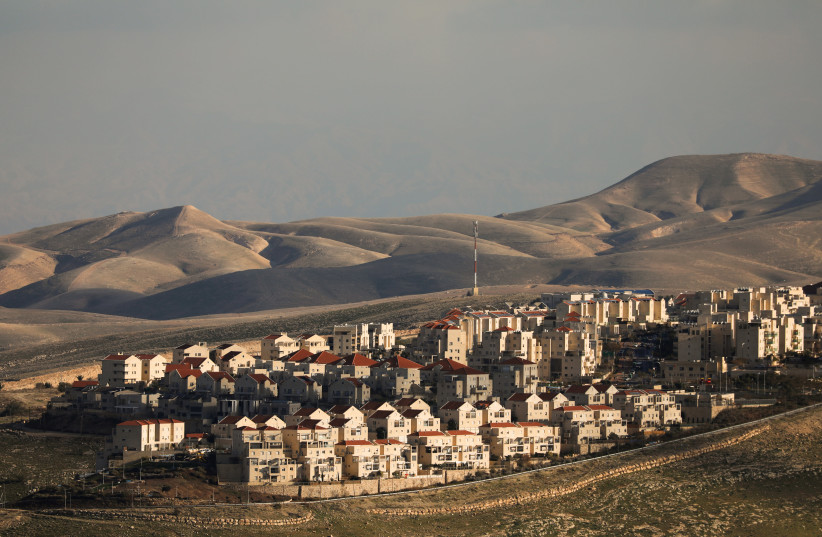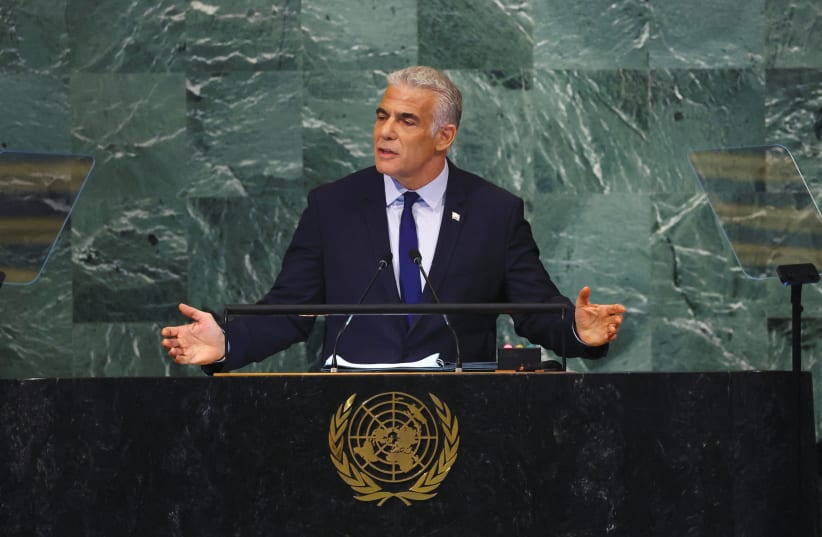What’s behind Prime Minister Yair Lapid’s support for a two-state solution and his declaration that there are no alternatives?
Since there is no chance of implementing a two-state solution, why support it? It has some advantages but it also is dangerous.
What is the idea behind the two-state solution?
The idea of a two-state solution was created by Shimon Peres and Yossi Beilin as part of the Oslo Accords, which recognized that “the PLO was the sole representative of the Palestinian people,” giving it the exclusive right to determine what would happen. The Oslo Accords, however, do not refer to a two-state solution. That was part of secret agreements made with Yasser Arafat but we don’t know what they are. This has led to much confusion and our current misunderstanding of a two-state solution and what it means.
The peace process was based on the false assumption that Arafat had changed, and that the Palestinian Liberation Organization (PLO) would abandon terrorism. Although Arafat denied what he had agreed to in the Oslo Accords and despite waves of terrorism, Israeli leaders continued to support him and the Palestinian Authority, which was only a cover for the PLO. Skepticism was buried under enthusiasm for the myth of the peace process and the idea that Arafat was our partner, as Peres referred to him. It was a lie and Peres knew it.


Under Peres and his successors, a two-state solution was accepted by some Israeli leaders, although it was never discussed or approved by the Knesset. Even after Ehud Barak and Ehud Olmert offered the PLO almost everything they wanted, the PLO and Hamas still refused to accept Israel’s right to exist.
The two-state solution was the basis for Israel’s withdrawal from the Gaza Strip and four Jewish communities in the Shomron – the disengagement. The Disengagement Law is still in effect and has never been revoked. Judea and Samaria remain under military rule.
Support for a two-state solution was expressed by many countries and world leaders, which explains why Israeli leaders did not want to oppose it. It’s also part of an agenda to minimize and restrict settlements, including further withdrawals from areas of Judea and Samaria, and it’s part of a campaign to undermine the settlement movement and Religious Zionism, and as a way of supporting the PA/PLO as a pseudo-government. This also serves Israel’s interests by helping to shield Israel from criticism by the international community (e.g. demands to end the occupation, Palestinian self-determination, etc.), and it deflected criticism of Israel by offering incentives to encourage a peace process. In addition, it helps Israel in its conflict with Iran and its proxies, Hezbollah and other terrorist groups.
What would supporting the two-state solution mean?
Support for a two-state solution also works to offset calls for Israel to annex Judea and Samaria, and expand settlements. Consequently, it serves as a buffer to preserve the status quo but it also has devastating effects.
Supporting a two-state solution is part of the psychological warfare (brainwashing) to get Israelis to accept the idea that Palestinians are a people, who deserve a state and that Israel must make more concessions for peace. It shifts the focus from terrorism to appeasement. It supports the Palestinian narrative that Israel is illegally occupying Palestinian territory, all of it, from the river to the sea. It legitimates the Nakba narrative that Israel is guilty of ethnic cleansing, stealing Palestinian land and property, occupation, etc. It denies Israeli sovereignty over the homeland of the Jewish people.
Promoting a two-state solution as the only way of solving the conflict, ignores other alternatives, such as a multi-state solution, a regional approach based on the Jordanian option that Jordan is the Palestinian homeland and resolving the problem of Arabs who live in UNRWA camps and elsewhere.
Ironically, supporting a two-state solution undermines Israel’s struggle against terrorism by refusing to hold the PA/PLO accountable, legitimizing Palestinian resistance against the occupation (i.e. terrorism), and promoting the idea that the PA/PLO is able and willing to fight terrorism against Israel.
It creates symmetry between Israeli and Palestinian nationalism, and between Zionism and Palestinian Liberation, and legitimizes the Palestinian struggle against Israel as ethical and moral. This is part of the Global Intifada and the BDS movement to brand Israel as a racist, Apartheid, settler-colonial state, guilty of war crimes. Their genocidal goal is Israel’s destruction via another Palestinian state.
Although a two-state solution cannot be implemented, supporting it promotes the Palestinian agenda that Israel must return to the 1949 Armistice lines. It means ignoring the declared goals of the PLO covenant and Hamas charter to destroy Israel. It means accepting Palestinian sovereignty instead of Israeli sovereignty.
The truth is that there is no peace process and there never was. It was all a fake, a lie to advance the PLO/Hamas and Islamic objectives to destroy Israel. Promoting a two-state solution, therefore, may seem to have no practical relevance but it justifies the Palestinian agenda and has a strong emotional appeal among those who seek to kill Jews and eliminate Israel. Why, then, do Lapid and others support it?
The author is a PhD historian and journalist in Israel.
